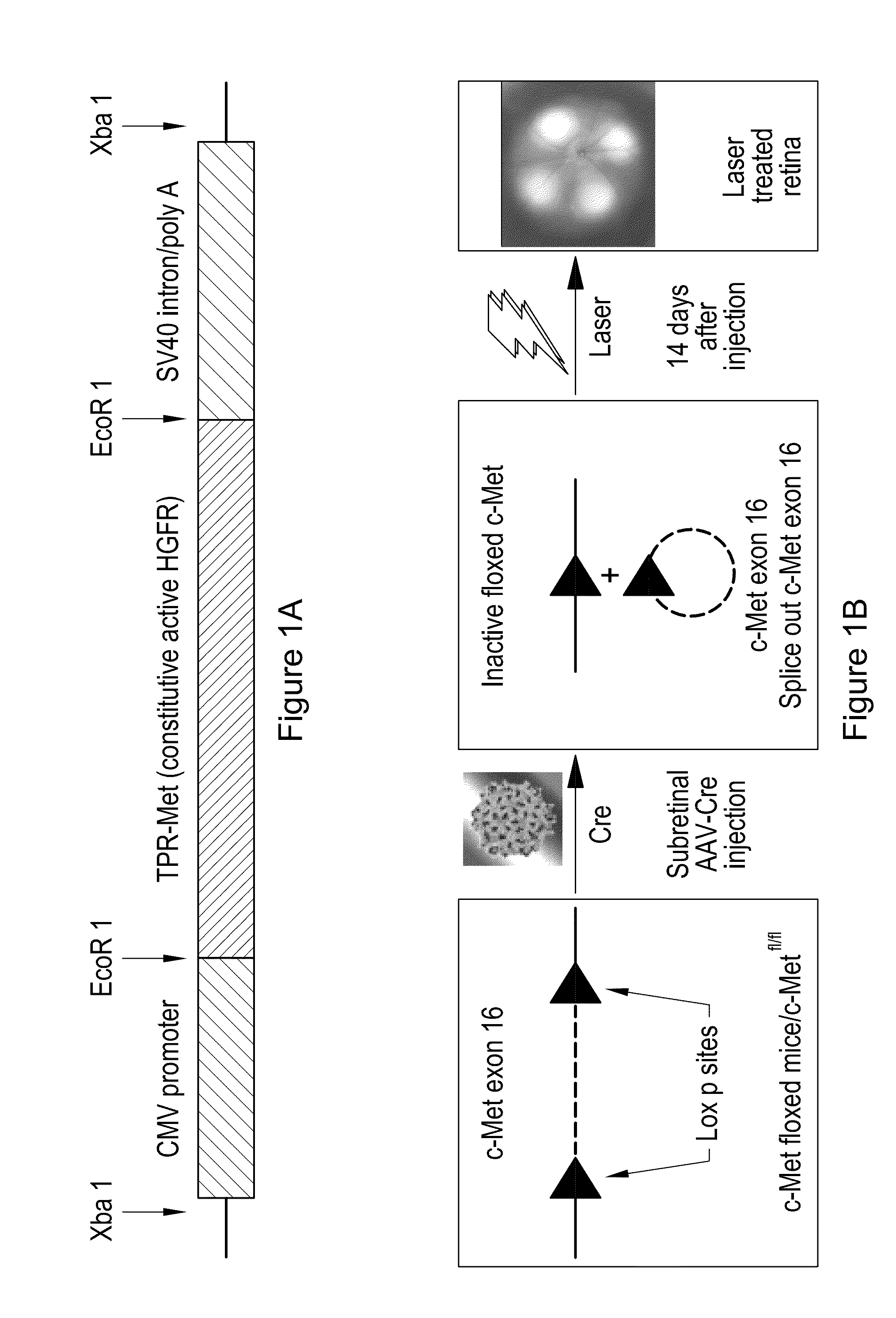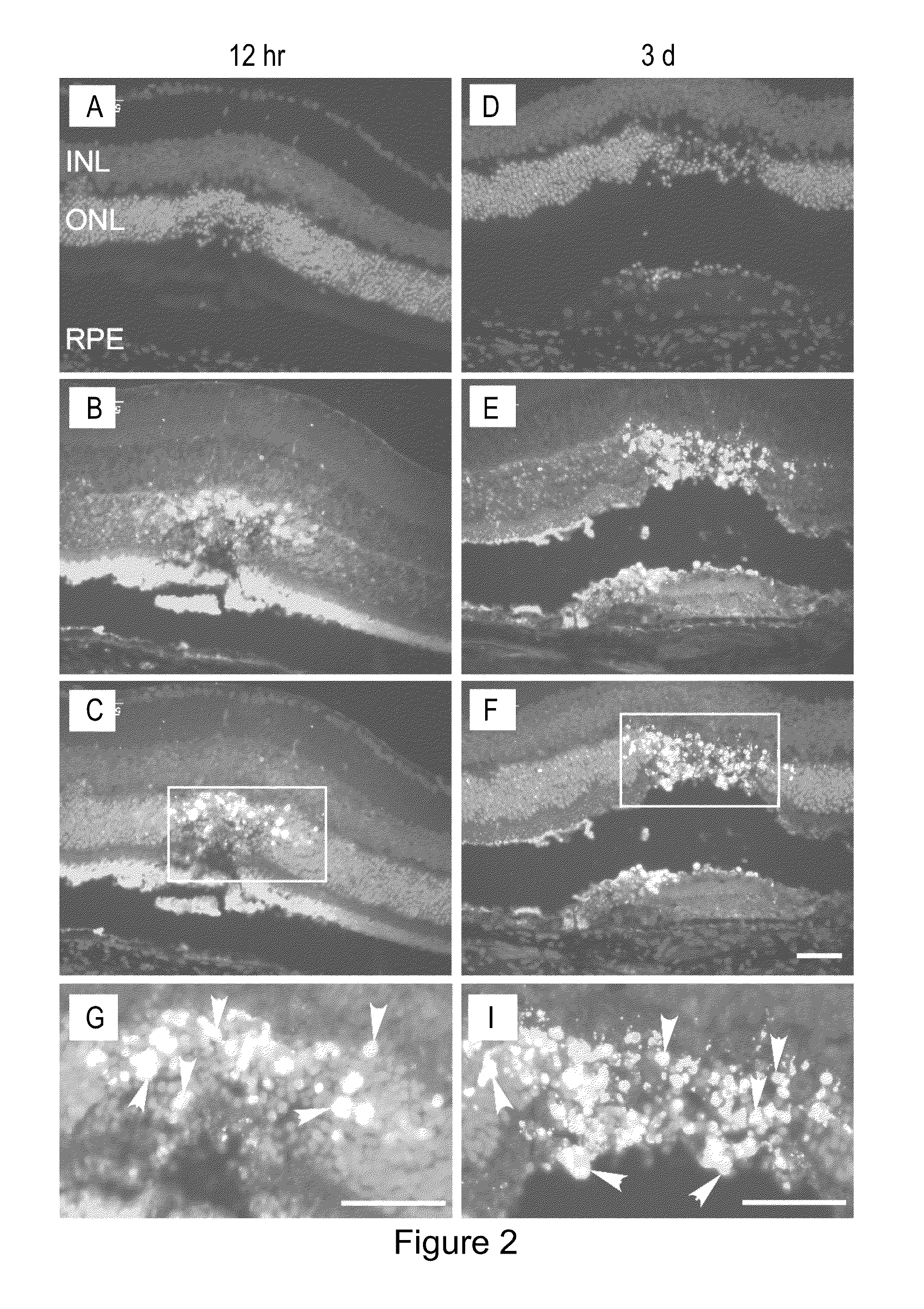Treatment and prevention of retinal injury and scarring
a retinal injury and scarring technology, applied in the field of treatment and prevention of retinal injury and scarring, can solve the problems of severe clinical ocular injuries, significant medical care and lost work time, and severe disability of the military in terms of medical care and lost work time, and achieve the effects of reducing scar formation and vision loss, simulating laser induced injuries to the rpe, and increasing the expression of both hg
- Summary
- Abstract
- Description
- Claims
- Application Information
AI Technical Summary
Benefits of technology
Problems solved by technology
Method used
Image
Examples
examples
Materials and Methods
[0050]All experiments were performed in accordance with the association for Research in Vision and Ophthalmology Statement for the Use of Animals in Ophthalmic and Vision Research. Three different types of mice were compared as detailed in Table 1 below.
[0051]B57BL / 6 (B6) mice were purchased from Charles River Laboratories (Cambridge, Mass.) and used as a model for wild-type c-Met expression. FVB / N-Tg / mtTPRmet mice were obtained from Jackson Laboratories (Bar Harbor, Me.), and backcrossed to B6 mice×6 to produce a stable colony (C57BL / 6 / FVB / N-Tg / mtTPRmet) in the B6 background (TPR-Met mice). In TPR-Met mice, the extracellular domain of c-Met gene was replaced with the TPR gene. This provided two strong demerization motifs and subsequent constitutive activation of the receptor in an HGF-independent manner. To ensure the proper c-Met expression in TPR-Met mice, SV40 splicing and polyadenylation signals were added to the structure (FIG. 1A). Heterozygous TPR-Met mi...
PUM
| Property | Measurement | Unit |
|---|---|---|
| size | aaaaa | aaaaa |
| wavelength | aaaaa | aaaaa |
| thickness | aaaaa | aaaaa |
Abstract
Description
Claims
Application Information
 Login to View More
Login to View More - R&D
- Intellectual Property
- Life Sciences
- Materials
- Tech Scout
- Unparalleled Data Quality
- Higher Quality Content
- 60% Fewer Hallucinations
Browse by: Latest US Patents, China's latest patents, Technical Efficacy Thesaurus, Application Domain, Technology Topic, Popular Technical Reports.
© 2025 PatSnap. All rights reserved.Legal|Privacy policy|Modern Slavery Act Transparency Statement|Sitemap|About US| Contact US: help@patsnap.com



